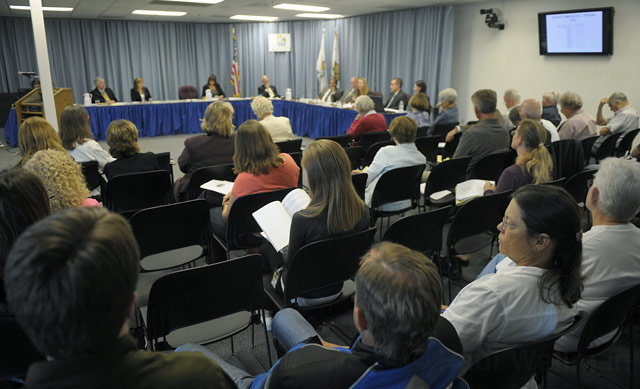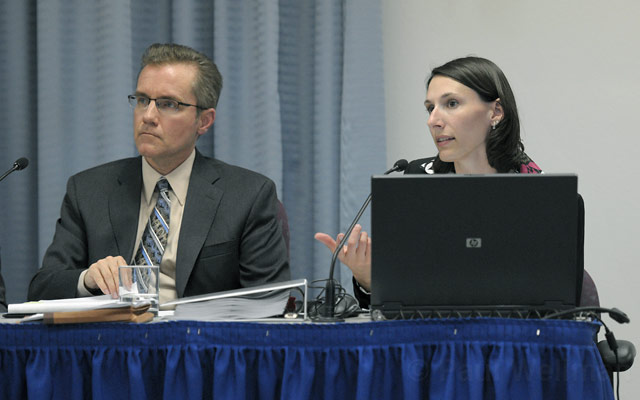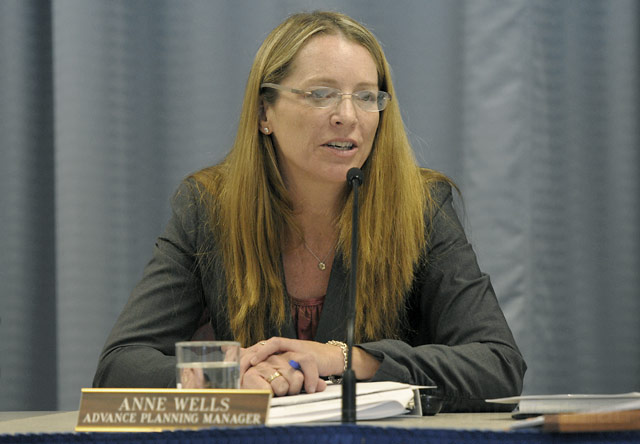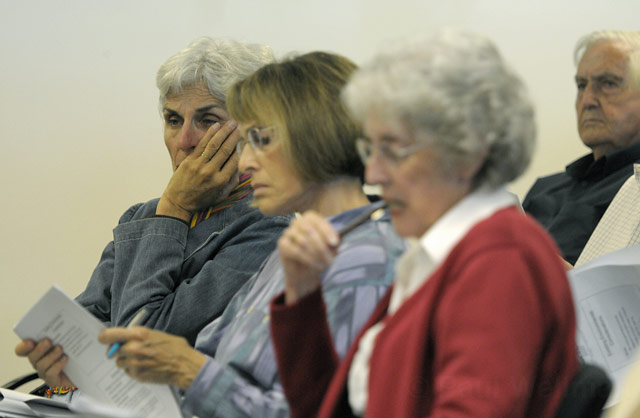Bishop Ranch Study Unveiled
Dozens on Hand to Learn Facts About Goleta's Largest and Most Controversial Undeveloped Landscape
Though 200 acres of the 240-acre Bishop Ranch in Goleta could theoretically support some sort of agriculture, the property only has access to enough water to tend about 25 acres, making its future as an urban farm quite questionable. But its proposed alternative future as the site of 1,200 homes would come with plenty more negatives, from impacts on cultural resources like the historic ranch house to burdens on already taxed community services.

Those were just two of the informational nuggets learned by nearly 50 interested citizens on Thursday night at Goleta City Hall, where the City Council (sans an ill Margaret Connell), Bishop Ranch representatives, and members of the public listened to the results of a consultant’s $85,000, almost 500-page fact-finding study of the property, which is easily the most controversial plot of undeveloped land in all of the Good Land.
The study was paid for by the landowner, University Exchange Corporation, which has submitted conceptual plans for 1,200 homes on the property. That would require an amendment to the Goleta General Plan, for Bishop Ranch is currently zoned for agriculture even though it’s been nearly two decades since any real farming was conducted there. The City Council is “duty-bound” to duly consider proposed changes to the General Plan, explained city planning director Steve Chase, and the study — which was conducted by ICF Jones & Stokes, the firm that also did the General Plan and therefore knows the community well — was commissioned to answer some basic questions about the property, such as ag viability, water rights, and other long-debated but never-determined facts.
The answers weren’t particularly shocking to anyone, but they did lay out some basic realities, such as that, because of so-so soils and some sloping, it’s not great for farming and, because the ranch is only entitled to about 50 acre-feet of water per year, only about 25 acres would be farmable anyway. Said project director Charles Smith of ICF, “Without irrigation and water, it’s pretty low suitability [for agriculture].” He also explained that, while current zoning wouldn’t allow ranching anyway, experts told him that the property would only support 19 head of cattle. And, he added, “Because of the climate here, you really can’t do dry farming.”

But the study — which evaluated 13 separate resources (aesthetics, air quality, geology, noise, etc.) and then rated their impacts for existing use, agricultural use, and urban use — was nowhere near endorsing development either (even if it found that Goleta was indeed lacking in available workforce housing). Existing use, a.k.a. almost nothing at all, scored highest on the environmental scale, with agriculture second, and urban use third, the latter picking up the most negative scores by far. But for a study that was to determine the status quo of essentially impact-free land versus the impacts of full-scale development, such scores were far from surprising.
More insightful, however, was the historical research on the property, from the times it was a “hub” of Goleta’s farming scene and the various ag uses over the decades (citrus to strawberries, cattle to Christmas trees) to the purchase by the current owners in 1957 and the legal battles that whittled away Bishop Ranch’s water rights, eventually seeing them dwindle to just 50 acre-feet per year in the 1990s. There was also the seemingly newfound importance of the ranch house itself, which the County of Santa Barbara nearly named a historic landmark in 1994 but declined when the owners were opposed. “Because it’s not a landmark, you could still tear it down,” explained project manager Nicole Williams. “But because of its age and association with the ranch, it does still have some historic significance.”

The most subjective assessment of the evening came from Goleta planner Anne Wells, who offered a few “take aways” from her reading of the study. Regarding the bouncing water rights, she explained, “It was like this hot tamale,” attributable to the droughts of the 1980s and ’90s — and not, apparently, the long-rumored conniving of the landowners. “That doesn’t mean you couldn’t have agriculture,” said Wells. “It just means that you need to be more creative.” She was also impressed with the ranch house research. “Clearly, that ranch house is pretty special and it’s very unique,” Wells said.

In summing up the study quite perfectly, Wells then explained, “There’s nothing super profound … except that I got a different kind of attachment to the property.” For the vocal Goleta community that’s vehemently opposed to any building on Bishop Ranch — including the 16 anti-development letter writers whose comments were passed out by the city on Thursday without a single citizen writing in favor — that’s the exact kind of attachment they want all residents of the Good Land to have. For those seeking to develop the property — who did not wish to comment until after they’d read the entire report — that kind of attachment is only likely to make their work harder.
Public comments on the Bishop Ranch study will be taken at Goleta City Hall on Thursday, August 18, starting at 6 p.m. The City Council will then publicly debate the matter and decide on whether to initiate a full study of a General Plan amendment on Tuesday, September 20. The 500-page study itself is expected to be posted on the City of Goleta’s Web site sometime soon. See cityofgoleta.org.



